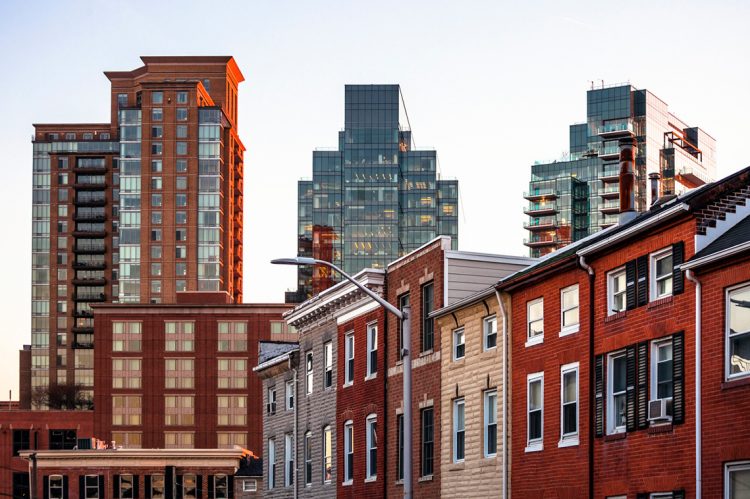Rent prices across the U.S. have shot up, with CoreLogic reporting that single-family rent growth was up overall by 12.6% in July 2022 year over year. To be more specific, all rent tiers, lower-priced, lower-middle priced, higher-middle priced and higher-priced, had increased by 13.9%, 13.6%, 13.4%, and 11.4% respectively.
CoreLogic has also found that the metros of New York, Philadelphia and Washington had seen accelerated rent growth since April 2022. This rings true for New York City, whose prices have soared on sizes of rental spaces. Some of the smallest rentals in the city have reached the highest prices on record.
The rent prices
A housing shortage across the boroughs of NYC has left the rental market in a state of chaos.
Despite a population slip, the city was severely lacking in housing options, found Justin Fox from Bloomberg in an analysis of NYC’s rental market he published in the Washington Post September.
“New York City’s population fell by an estimated 336,677, nearly 4%, between April 2020 and July 2021,” stated Fox. “In August, New York had by far the lowest rental vacancy rate of any large city in Apartment List’s database, at 2.6%.”
Fox attributes the lack of housing to a few different factors: more single young adults renting rather than families, not enough new housing being built, not enough rental housing, and too many empty apartments (units marked “vacant, not available for sale or rent” have doubled over the past decade).
This lack in housing has led directly to an hefty increase in rental prices in NYC. StreetEasy found in a Q4 of 2021 market study that “The median asking rent in New York City rose to $2,700 in the fourth quarter—an increase of 8.2% from the previous year and 11.6% from the first quarter.”
In addition to this data, the New York Times reported that from 2011 to 2021 NYC residents spent about 35% of their income on rent. “Between 2017 and 2021 the city lost nearly 100,000 units that rented for less than $1,500 a month,” stated author James Barron. “It gained roughly the same number that rented for $2,300 or more, continuing a 30-year trend.”
The spaces
With a lack of spaces and an increase in price, many tiny apartments have had rent increases that could be considered outrageous. TikTok and Youtube trends under hashtags such as #NYCliving and #NYCapartments have shown many residents and agents going viral for showing off small units within the city.
Micro apartments—apartments under 350 square feet that have a kitchenette and may or may not contain a bathroom within the unit—have become a trend in recent years due to their trendy tiny house feel and boasted affordability. Similarly, tiny studio apartments with their own kitchen and bathroom but sized under 500 square feet, have also been praised online for being affordable and adorable.
Here are some micro apartments in NYC and their monthly rent prices:
- 55 sq ft at $1400
- 66 sq ft for $1095
- 72 sq ft (not counting the bathroom) for $1200
- 95 sq ft for $687 (with a shared hallway bathroom)
- 80 sq ft at $650 (hallway bathroom)
- 95 sq ft at $995 (hallway bathroom)
And here are some tiny studio apartments and their prices:
- 150-175 sq ft for $1500
- 200 sq ft at $1775
- 220 sq ft at $1650
- 300 sq ft for $2300
- Under 300 sq ft for $2100
The takeaway
While these types of spaces are unique, fun and riding off the hype of the tiny house trend, their price tag is no longer as appealing as it used to be. Even for micro apartments, the most affordable units don’t have a private bathroom but rather a shared hallway bathroom with the other residents. NYC’s status as the city where dreams are made of has fallen quite a bit, but hope appears to be beaming on the horizon.
The wage growth in NYC still hasn’t matched up to the rent growth, but StreetEasy has reported that the outlook isn’t all bleak. The median asking price dropped from 33% year-over-year growth in June-August to 27% in September. “Slowing year-over-year growth is an early sign that the heated rental market may be losing its sizzle,” said the author of the report.
Additionally, the report stated that “the share of rental listings with price cuts is rising quickly, indicating landlords are resetting their expectations as demand cools. Adjusting for seasonal fluctuations, the share of rental listings that cut asking rents rose to 17.7% in September, the highest since the pandemic.”
With other reports saying that the housing market is expected to lean toward buyer’s favor by the end of 2023, the rental market will hopefully be leaning in renter favor as well, sooner rather than later.












